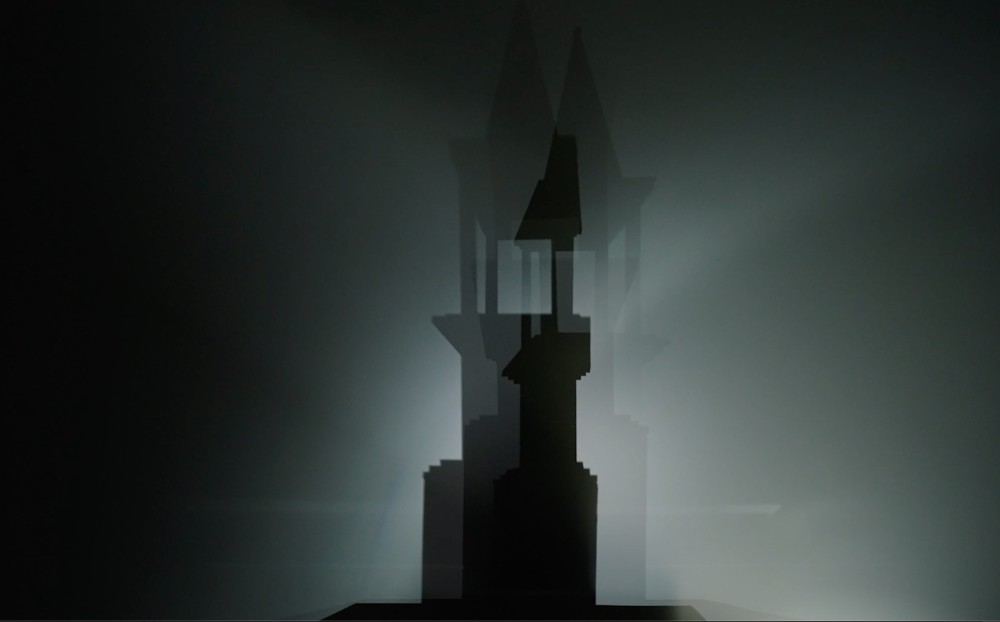
Won Ju Lim: An Artificial Place
Sidecar is pleased to present An Artificial Place, a presentation of new and recent works by 2024 Guggenheim Fellow Won Ju Lim, organized in collaboration with Parapet, St. Louis. The artist’s career retrospective, curated by Rory Padeken, will open at the Denver Art Museum in 2026. At Sidecar, collaborative work with artist Matthew Brannon will also be on view.
The title of this exhibition sets the scene for the audience in a seemingly straightforward manner. Galleries, it reminds us, are unnatural places, reserved for artifice. But there is more to those words, which in fact derive from literature, specifically the writings of Marcel Proust. They are resumed inside via a series of “magic lanterns” that Won Ju Lim has produced over the past three years, and which form the bulk of this show. When their titles are read in sequence, the textual fragment is rounded out:
That sense of the complexity of the Bois de Boulogne which made it an artificial place and, in the zoological or mythological sense of the word, a Garden, I captured again, this year, as I crossed it on my way to Trianon, on one of those mornings, early in November, when in Paris, if we stay indoors, being so near and yet prevented from witnessing the transformation scene of autumn, which is drawing so rapidly to a close without our assistance, we feel a regret for the fallen leaves that becomes a fever, and may even keep us awake at night.
This meandering sentence comes from the novel Swann’s Way (1913), the first volume of Proust’s In Search of Lost Time. A monumental feat of remembrance, it looms large over the proceedings, plunging every work on view in the febrile uncertainty of the past tense. Arranged on gently rotating platforms are items of various sorts—handmade architectural models, hobby kit renditions of environmental details, and a wide assortment of domestic bric-a-brac gleaned from thrift-stores, swap meets, and estate sales—all pertaining to episodes from Proust’s grand adventure in introspection. Accordingly, one could say that these are things summoned from another time, infused with a mental atmosphere, perhaps mere figments of reverie. And yet, unlike the words that
appear on the author’s pages and are so readily translatable into thought, these things constitute a phenomenal reality, available to our eyes here and now. Moreover, raked by the light of the small desk lamps at their side, they gain an uncanny sense of agency, projecting past their given form as shadows and reflections—images.
Also included is a new series of wall-hung works collectively titled Regained (2024) after the seventh and final volume of Lost Time, which are based on documentation of these objects in action. Every distinction between causal agents and their effects is here erased as the spatial depth of the source photographs compresses into delicately overlapping arrangements of colored shapes, screen-printed onto mirrored Plexiglas. At every step in this translation process, the Proustian point of origin grows more distant. That which initially took shape in perception, then memory, and then imagination was written down, was read, and was again memorized, reimagined. Words were congealed into objective sculptural forms, these subsequently captured by camera, and then reproduced as pictures beset by a whole host of remediations. What we see upon their surfaces is something from far away brought close, because the room we are in is there too, as are we, seeing ourselves seeing.
In Casting II (2023), a 39-minute single-channel video also featured in the show, a voice-over narrator once again takes us to the novelistic scene of a garden. This work could be slotted into the “making of” category. In it, we observe Lim working on one of her shadow-play lightboxes, a genre she began exploring in 2003. An example hangs on the opposite wall, dominated by Man Ray’s famous portrait of Proust on his deathbed. One might wonder if he is still dreaming of his childhood; the video suggests as much. Throughout, the lights flicker on and off. At the extreme, a white screen suddenly turns black, but which is more full or empty from the perspective of memory? Hands move small objects across a tabletop stage where, caught up in a play of brightness and obscurity, they occasionally lock into virtual tableaux, only to again decompose into the stuff they actually are. In the drawn-out finale, which amounts to a kind of credit sequence, each “takes a bow.” These diverse things, already so steeped in memory and storytelling, double down on their illusionistic aspect, effectively representing “themselves” as imaginary entities, the flora and fauna of an artificial place.
—Jan Tumlir